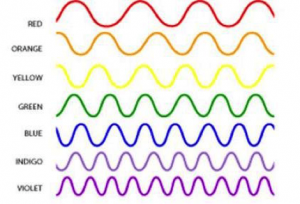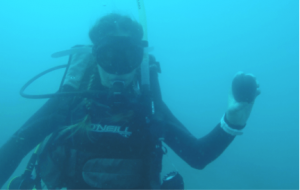
Have you ever gone diving and noticed that colors above the surface may look very different than colors below? This is because light and color are very different underwater. Water is very good at absorbing light, and to understand this a little bit better, let’s talk about good ol’ Roy G. Biv.

Roy G. Biv (an acronym for the color spectrum) stands for the colors red, orange, yellow, green, blue, indigo, and violet. These colors are in order from lowest to highest energy. Sunlight contains all of the colors of our visible color spectrum and these colors combined together create white light. As you travel from the surface to deeper waters, the amount of light changes and decreases with depth.

Red light has the longest wavelength and therefore has the least amount of energy in the color spectrum. Wavelength decreases as energy increases as you move from red to violet light across the color spectrum. Blue light however penetrates the water the best. This is why the ocean can appear in many different shades of blue. Unlike blue light, red light becomes quickly filtered from water as the depth increases. At around 300 feet, no visible light can penetrate the water at all!
Let’s take an apple for example. At the surface an apple appears red. It appears red because it is reflecting that red light from the sun. When taking this apple down to depth at around 70 feet however, it lacks the red coloration and appears greyish. This is because the deeper you go, there is less and less red light to reflect off the apple. This is an amazing adaptation for deep-sea creatures to have. Deep-sea creatures that are red will appear less visible to prey.

Resources:
http://aquaairind.com/news/Why-Are-Colors-Different-Underwater
http://oceanexplorer.noaa.gov/facts/red-color.html
http://researchthetopic.com
Written By: Brooke Fox


